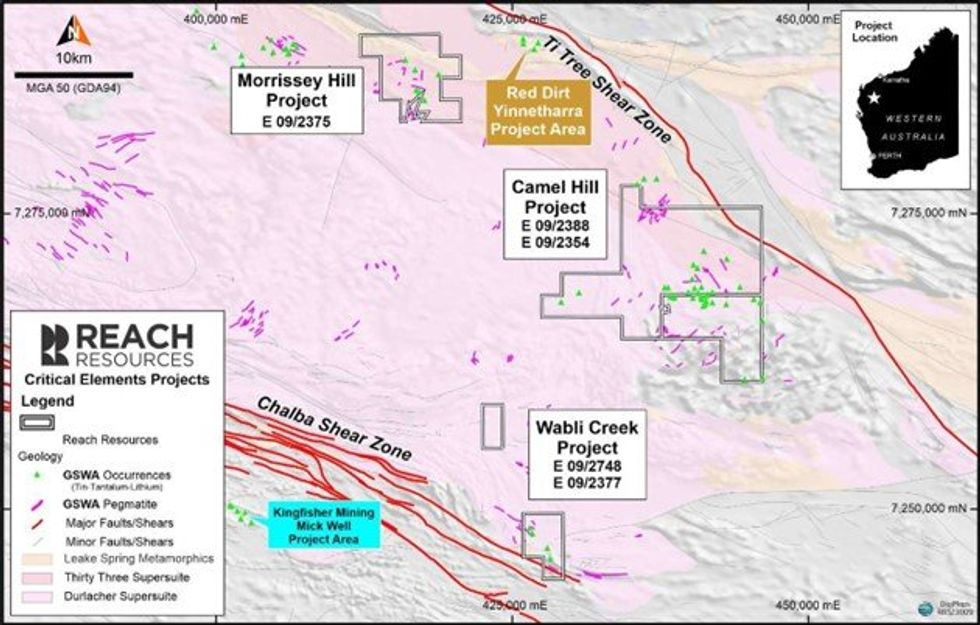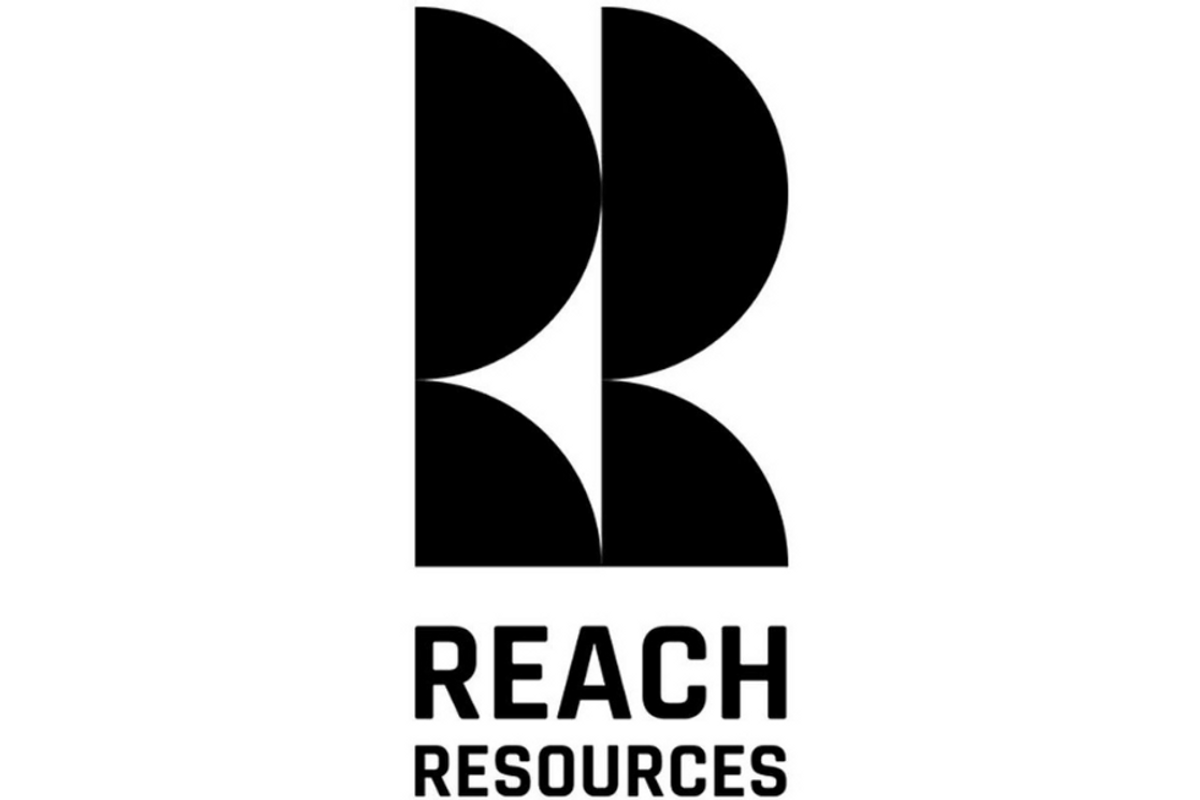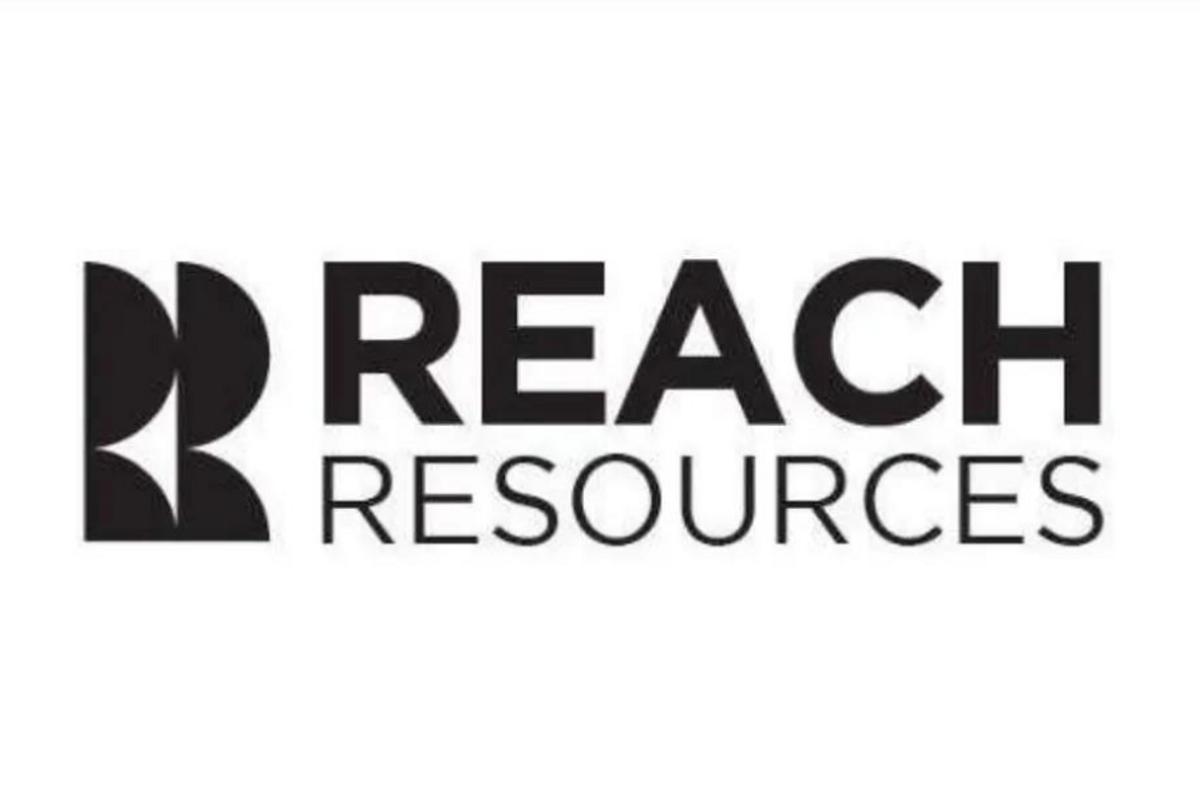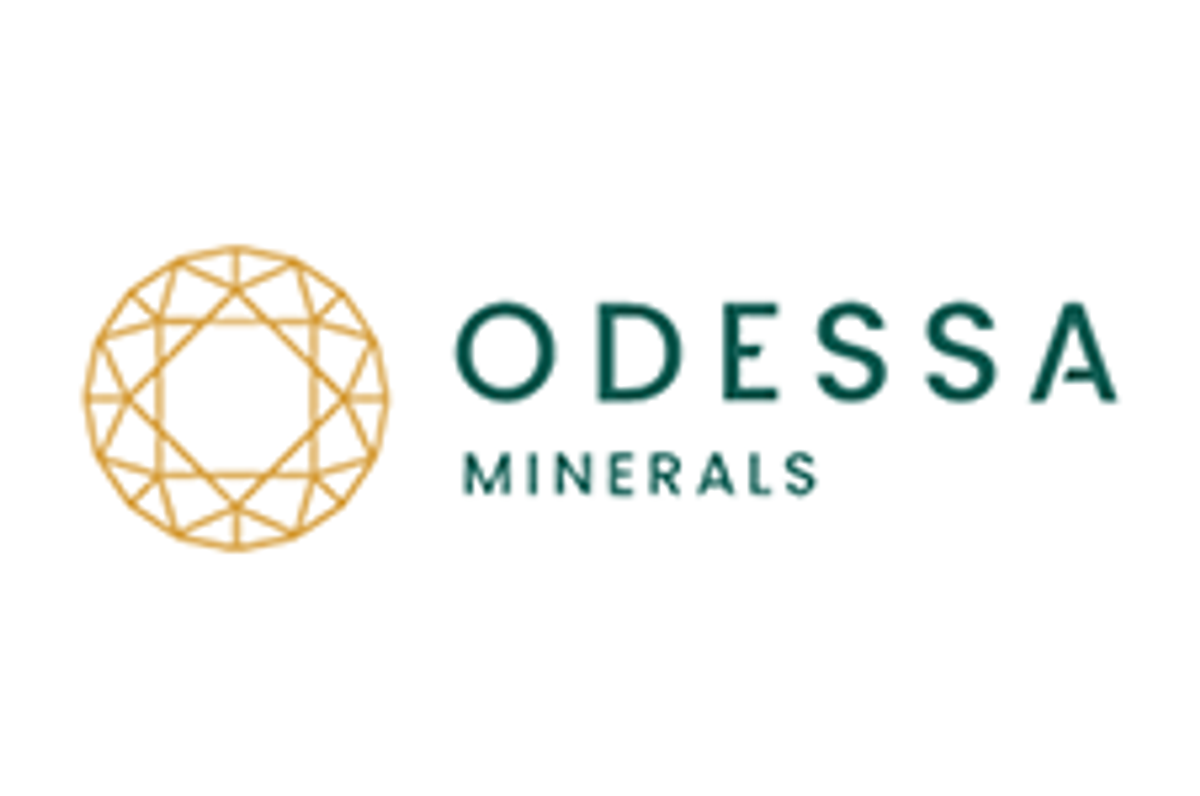
March 13, 2023
Reach Resources Limited (ASX: RR1 & RR1O) (“Reach” or “the Company”) engaged globally renowned geological consultants RSC Consultants Limited (RSC) to assess the potential of the Company’s Gascoyne projects for:
- Lithium (Li): hard rock, high grade LCT Pegmatites
- Rare Earth Elements, Heavy and Light (HREE; LREE): clay/hard rock hosted
- Manganese (Mn): high grade strata bound, supergene, and• Precious and base metals (Au; Ag; Cu-Pb-Zn)
HIGHLIGHTS
- Independent geological experts RSC consultants have identified four priority target areas for Lithium-Caesium-Tantalum (“LCT”) Pegmatites within the Company’s Critical Elements Projects, located in the centre of the rapidly developing Gascoyne “Battery Metals” Province, WA
- Each of the target areas are associated with confirmed fertile parental granites of the Thirty Three and Durlacher Supersuites and contain the same metasedimentary sequences which host Red Dirt Metals (ASX: RDT) Yinnetharra Lithium Project, less than 10 km’s to the NE of Reach Resources’ tenure
- All of the targets are defined by favourable geology, multi-element pathfinder geochemistry and the presence of mapped Geological Society of Western Australia (GSWA) Tin, Tantalum and Lithium pegmatites
- A helicopter supported field reconnaissance program has been initiated to assess the priority areas in more detail
- Drilling of priority targets is scheduled to commence in CY Q3/4 2023 once all regulatory approvals are received
CEO Jeremy Bower commented:
“RSC’s independent expert analysis confirms our belief that our landholding in the Gascoyne has the potential to host significant battery metal deposits.
Phase 1 of the assessment focused on the lithium potential at our Critical Elements Projects and has not only cemented Morrissey Hill as our primary lithium target but importantly has identified three new lithium target areas. Each of the areas are defined by the presence of a highly fertile parent granite and supported by key multi-element geochemistry including lithium, caesium, tantalum, tin and rubidium which are all well documented associations of lithium bearing “rare metal” LCT pegmatite mineral systems.
This is an exciting time for the Company and our shareholders, and we look forward to delivering updates to the market over the coming months. The Future is within Reach”.
Phase 1 of the assessment focused on the lithium potential of the Company’s Critical Elements Projects which includes the newly acquired Morrissey Hill and Camel Hill projects as well as the Wabli Creek project (Figure 1).

The assessment included a review of relevant deposit models and mineralisation styles of interest, regional and local geology, local mineral systems, academic papers, open file company and government reports and all available geochemical, geophysical and remote-sensed data sets.
Click here for the full ASX Release
This article includes content from Reach Resources, licensed for the purpose of publishing on Investing News Australia. This article does not constitute financial product advice. It is your responsibility to perform proper due diligence before acting upon any information provided here. Please refer to our full disclaimer here.
RR1:AU
The Conversation (0)
03 May 2022
Reach Resources Limited
Sourcing the Critical Minerals of the Future
Sourcing the Critical Minerals of the Future Keep Reading...
13 May
Murchison South Increases to 67koz Gold Across Two Pits
Reach Resources Limited (ASX: RR1 & RR1O) (“Reach” or “the Company”) is pleased to announce the completion of a new Mineral Resource Estimate (MRE) for the Pansy Pit deposit at its Murchison South Gold Project. The estimate, prepared by independent consultants Mining Plus, reported above a... Keep Reading...
28 July 2023
Quarterly Activities/Appendix 5B Cash Flow Report
Reach Resources Limited (ASX: RR1) (“Reach” or “the Company”) provides its activities report for the quarter ended 30 June 2023. HIGHLIGHTS High-Grade Lithium Results at Yinnetharra (15 May 2023) Lithium mineralisation confirmed with rock chip samples reporting highly encouraging assays of up to... Keep Reading...
18 May 2023
Outcropping Copper Gossan Delivers 33% Cu Assays At Morrissey Hill Project, Yinnetharra
Reach Resources Limited (ASX: RR1 & RR1O) (“Reach” or “the Company”) is pleased to announce that it has received high grade copper, gold and silver results up to 33% copper, 0.2g/t gold and 142g/t silver from its recently completed rock chip sampling program at the Company’s Morrissey Hill... Keep Reading...
14 May 2023
Reach Resources’ Strategic Position Between Two of WA’s Mining Heavyweights
Reach Resources’ (ASX:RR1) strategic position with its Morrissey Hill project has placed the critical mineral explorer on the radar of two of Western Australia’s mining giants Delta Lithium (ASX:DLI) and Minerals 260 (ASX:MI6), according to an article published in The West Australian.“While... Keep Reading...
Latest News
Interactive Chart
Latest Press Releases
Related News
TOP STOCKS
American Battery4.030.24
Aion Therapeutic0.10-0.01
Cybin Corp2.140.00


